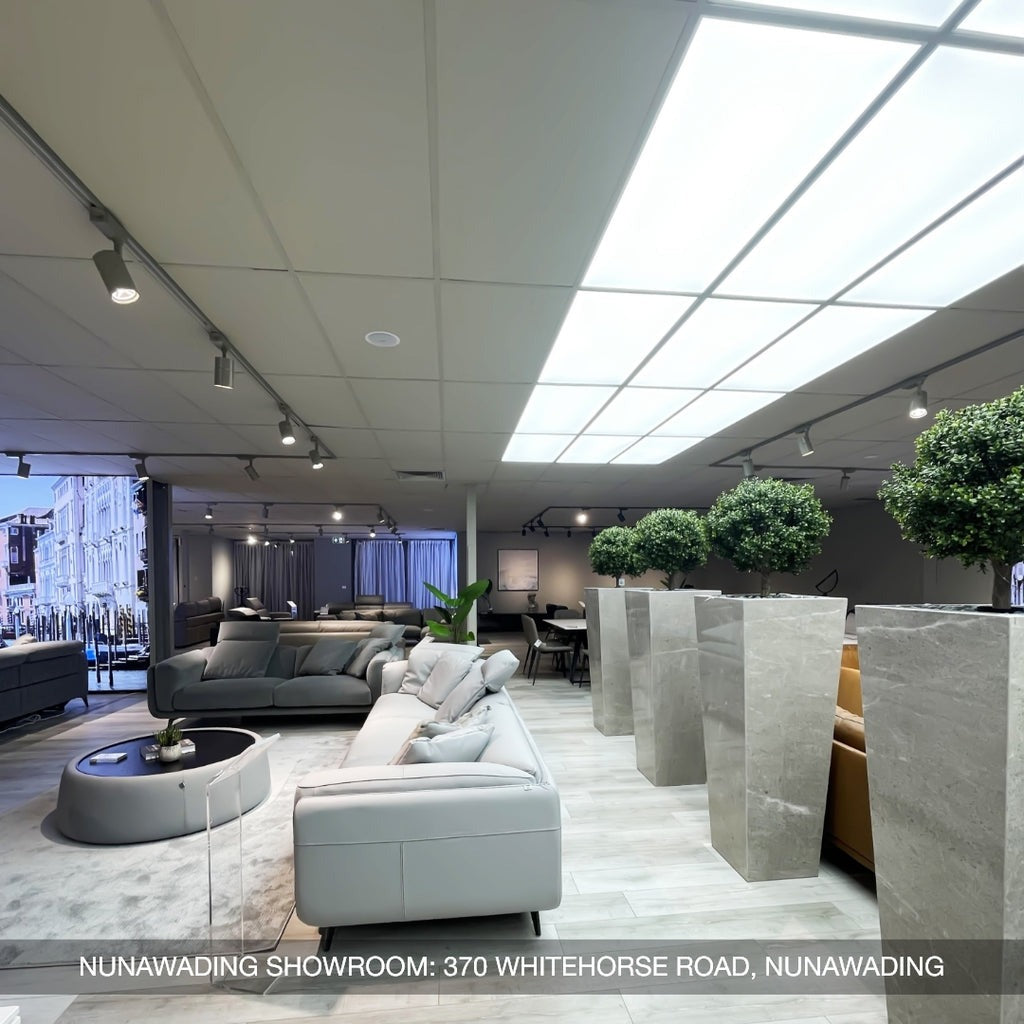Discover the art of mixing and matching upholstery fabric like a pro! In the realm of home interiors, the concept of mix and match has become a recurring theme, challenging the traditional notions of matching and uniformity. We yearn for spaces that exude a natural, personalized charm rather than a rigid and predictable formality.
By expertly combining sofas and chairs, you can create a captivating atmosphere that captures a "lived-in personalized look" without appearing overly coordinated. To help you master the art of upholstery fabric combinations, we present a comprehensive guide on mixing and matching sofas and chairs, enabling you to infuse your family room with a sense of style and comfort.
How to mix and match upholstery fabric for your furniture?
Colors and Patterns
When it comes to mixing and matching upholstery fabric for your furniture, colors and patterns can be your secret weapons. Instead of tirelessly striving for an exact color match between different seating pieces, opt for the magic of contrast. Pairing a dark color with a light hue or a vibrant shade with a neutral tone can create a stunning visual impact. By doing so, you save yourself time and effort that would otherwise be spent in pursuit of an elusive match.

Pick upholstery fabric that reflects your personal style and adds depth and character to your living space.
Another technique to consider is contrasting patterns in scale. Combine a large-scale pattern with a smaller one, and if you're feeling adventurous, play with complementary colors. Alternatively, you can select a color from the larger pattern and find a matching shade in the smaller pattern, creating a sense of unity between the two designs through a shared color choice.
When embarking on this exciting endeavor, explore the vast array of types of furniture upholstery fabric available. Whether you prefer solids, plaids, florals, or geometric patterns, the possibilities are endless. Unleash your creativity and pick upholstery fabric that reflects your personal style and adds depth and character to your living space.
So, take a bold step and mix and match upholstery fabric with confidence. Let the colors and patterns speak volumes, transforming your furniture into captivating focal points that showcase your unique taste and create an atmosphere of harmonious beauty.
Textures and Weaves
Elevate the allure of your furniture by embracing the art of mixing upholstery fabrics to create a stunning modern living room sofa. The key lies in exploring textures and weaves that add depth and visual interest to your space.

The key lies in exploring textures and weaves that add depth and visual interest to your space.
By daring to mix and match upholstery fabric, you can achieve a harmonious balance between comfort and style. Picture a sleek leather sofa harmonizing with a cozy textured fabric chair—a perfect fusion of sophistication and coziness.
Choose from a range of options, such as plush velvet, luxurious linen, or durable microfiber, and let the textures and weaves transform your furniture into captivating statement pieces. Indulge in a space that is visually striking and inviting, showcasing your unique taste and personality.
Factors to Consider When Choosing Upholstery Fabric
Durability and Usage Requirements
When choosing upholstery fabric, consider durability and usage requirements for a successful project. Assess the fabric's everyday use, the display, and the room it will inhabit.
Take into account factors like exposure to children and pets. For high wear and tear, opt for woven patterned fabrics with a higher thread count and tighter weaves, such as microfiber or leather. For decorative pieces with less frequent use, luxurious fabrics like wool and linen can be considered.
Understanding how to match upholstery fabric to its purpose ensures a well-suited choice. Mix and match upholstery fabric wisely based on durability and usage, creating a beautiful and functional space.
Style and Aesthetics
When selecting upholstery fabric, consider the style and aesthetics that will harmonize with both the furniture piece and the room's interior. Choose a fabric style that complements the overall mood and character of the space, whether you prefer a casual or formal look.

A fabric style that complements the overall mood and character of the space, whether you prefer a casual or formal look.
To infuse originality into the room, explore the option to mix and match upholstery fabric styles. However, exercise caution to avoid overwhelming the space with conflicting styles that could result in a less desirable outcome.
Properly scale patterns based on the size of the furniture and room. Opt for bolder patterns in larger rooms to make a statement, while more compact and subdued patterns work well in smaller, confined spaces.
Fabric Maintenance and Care
Fabric maintenance and care are vital factors to consider when selecting upholstery fabric for a comfortable fabric sofa. Opt for fabrics that offer easy cleaning and maintenance, ensuring your furniture remains in excellent condition over time.
To achieve a personalized and stylish look, feel free to mix and match upholstery fabric, but always keep practicality in mind. Choose durable and stain-resistant fabrics, such as microfiber or synthetic blends, that can withstand everyday use.
Before making a decision, review the fabric's care instructions to ensure they align with your maintenance preferences. Some fabrics may require professional cleaning, while others can be spot cleaned or machine washed.
Choose upholstery Fabric Type for Your Furniture
Natural Fabrics
When considering natural upholstery fabric types for your furniture, it's important to explore different options to find the perfect fit. One such fabric is chenille, which derives its name from its tufted appearance resembling a line of caterpillars. Chenille is often made from cotton and blended with other materials to enhance durability. With its unique texture and attractive sheen, chenille adds character to any space.

Cotton is a classic choice known for its softness, breathability, and affordability.
Cotton, on the other hand, is a classic choice known for its softness, breathability, and affordability. While it may not be the most resilient fabric, high-quality cotton with a tight weave can resist pilling and abrasion. Cotton blends offer increased durability, though they may alter the fabric's feel.
Linen, with its clean and rustic appeal, is ideal for creating a farmhouse shabby-chic look. It boasts impressive durability and tensile strength, although pure linen can be costly. Linen blends provide a more affordable option, but care should be taken as it stains easily.
Silk, a luxurious and smooth fabric, is a coveted material renowned for its softness and hypoallergenic properties. However, it requires delicate cleaning and protection from harsh chemicals and sunlight. Velvet, with its softness and lustrous appearance, is a dramatic choice that scatters light and adds a touch of opulence to any space. It retains heat and offers exceptional comfort, but it requires attention to pet hair and stains.
Finally, wool, a breathable and hard-wearing option, has been used for centuries. It feels luxurious and is eco-friendly, though pure wool may be more challenging to clean. Modern wool blends provide increased resilience and ease of maintenance.
Blended Fabrics
When choosing blended fabric types for your furniture, it's important to understand the various blend ratios available in the market. One common blend is 65% polyester and 35% cotton, but other ratios like 67/33, 70/30, 50/50, and more are also available. To know how to match upholstery fabric, consider the specific characteristics each blend offers.

To know how to match upholstery fabric, consider the specific characteristics each blend offers.
A blend of 65/35 polyester and cotton creates a fabric suitable for daily wear, combining strength, wrinkle resistance, and comfort. Increasing the cotton blend to 59/50 results in a softer and more absorbent fabric. Polyester adds strength, wrinkle resistance, and shape retention, while cotton contributes comfort, absorbency, and heat conduction. This blend is well-suited for tropical climates.
For terry-wool suiting fabrics, polyester's excellent shape retention is a valuable contribution. Blending polyester with wool enhances the strength of the fabric, while wool provides warmth, resiliency, drapability, and absorbency. Blends range from 65% polyester and 35% wool to 60/50, 55/45, and 50/50, offering options for light-weight, all-season suiting or when more warmth is desired.
When it comes to polyester viscose rayon blends, polyester contributes durability, resiliency, and shape retention. Viscose improves absorbency, texture, and color variety. Common blend ratios include 65/35, 55/45, 45/55, and 48/52, with 48/52 and 65/35 being commonly used for school uniforms and suiting materials.
Smart Fabrics at Cozy
Polyester, a highly resilient and easy-to-clean synthetic fabric, offers a wide range of possibilities for cozy furniture. It can be crafted to embody different textures, colors, and sensations.

Triumph 1 seater is a lux contemporary design integrating modern technology patented with smart fabric.
Surprisingly, two fabrics that appear and feel distinct can both be made entirely from 100% polyester. Not only is polyester affordable, but it is also highly functional. Its resistance to various elements makes it an ideal choice for outdoor furniture. It boasts qualities such as mildew resistance, fade resistance, abrasion resistance, wrinkle resistance, water repellency, and lightweight nature.
However, polyester does have a weakness: oil stains. Removing them can be quite challenging. Nevertheless, many polyester blends can be easily restored to their original perfection through machine washing.
Polyester is a top contender for those seeking a balance between budget and performance, which is why it is commonly blended with other fabrics. These blends offer easier cleaning, reduced wrinkles, and enhanced durability.
One thing to note is that lighter colors tend to stain on polyester, although they can be cleaned with some extra effort. Despite this consideration, polyester remains a versatile and reliable choice for smart, cozy fabrics in furniture.
How to select upholstery fabric with the suitable color
Neutral Colors for Versatility and Timelessness
Selecting upholstery fabric in neutral colors is a smart approach to achieve both versatility and timelessness in your furniture. Neutral shades like beige, gray, and cream effortlessly blend with various design styles and color palettes.
They serve as a blank canvas, allowing you to easily update your decor without the need for frequent fabric changes. Neutral upholstery fabric provides a timeless appeal that withstands changing trends. It also offers the flexibility to incorporate pops of color through accessories like pillows and throws.
Whether your style is modern, traditional, or eclectic, opting for neutral colors ensures a lasting and adaptable foundation for your furniture.
Bold Colors and Patterns for Statement Pieces
To create statement pieces with bold colors and patterns, it's crucial to know how to choose upholstery fabric wisely. First, consider the scale of the pattern. Larger patterns can make a bold statement, while smaller ones offer a more intricate look.

Vibrant hues like red, blue, or yellow can add energy, while contrasting colors create eye-catching effects.
Next, pay attention to color choices. Vibrant hues like red, blue, or yellow can add energy, while contrasting colors create eye-catching effects. Additionally, consider the durability of the fabric, especially if the furniture piece will experience heavy use.
Lastly, ensure the pattern and color align with your overall design scheme. By following these guidelines, you can confidently select upholstery fabric that will make a striking impact and transform your space into a visual masterpiece.
Leather Chair Color and Faded Leather
Choosing the ideal upholstery fabric for a leather chair color and faded leather requires thoughtful consideration. Start by evaluating the chair's color and opt for fabrics that complement or create a striking contrast.
Focus on textures that add depth and interest to the chair's appearance. When dealing with faded leather, consider fabrics with a distressed or weathered look that enhance its character. Prioritize durability to ensure the fabric can withstand regular use.
Lastly, ensure the fabric aligns with your desired style and ambiance, whether it's a classic or contemporary aesthetic. By following these guidelines, you can find the perfect upholstery fabric for your leather chair.
Conclusion
Mastering the art of mixing and matching upholstery fabric can elevate your interior design to new heights. By carefully selecting complementary patterns, colors, and textures, you can create a visually captivating and harmonious space.
Start by identifying a color palette or theme that ties the room together. Consider the mood you want to evoke and select fabrics accordingly. Experiment with different combinations, keeping in mind balance and contrast.
Don't be afraid to mix different fabric types for added interest. Lastly, trust your instincts and have fun with the process. With these expert tips on how to choose upholstery fabric, you'll be mixing and matching like a pro in no time.





